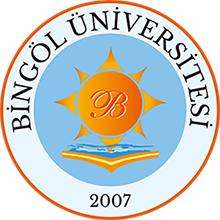التوجيه الدلالي في اختلاف القراءات العشر المتواترة في جزء عم
Özet
ملخص البحث:
يهدف هذا البحث إلى دراسة التوجيه الدلالي في اختلاف القراءات العشر المتواترة في
جزء عمَّ، إذ تشكلت فكرة البحث كنتيجة لإشكاليته التي تمثلت في التساؤل الرئيس: ما هو أثر
التوجيه الدلالي في اختلاف القراءات العشر المتواترة؟ وسعيًا وراء تقنين الدراسة وحصرها
قصرت التطبيق على جزء عمَّ، وذلك بالاعتماد على المنهج الاستقرائي التحليلي لما ورد في
كتب الأئمة من قراءات متواترة، وقد التزمت في حريره خطة محكمة تستوعب جوانب
الموضوع، بينت من خلالها أن الاشتغال بعلم القراءات القرآنية يجعل دائرة البحث واسعة،
إذ يقف الباحث على أسس توجيه النحويين لها، ويستشف الكثير من أسرار الأحكام والقواعد
اللغوية والبلاغية، وذلك باعتبار توجيه القراءات والاشتغال به من أنواع تفسير القرآن
الكريم، كما نقف على أثر اللغة العربية في التوجيه، وذلك بإعمال النظر في معايير القراءة
وأصولها التي تحدد قبولها من عدمه، فاعتمدها علماء العربية واستنبطوا منها الأصول التي
بنوا عليها علومهم، وما خالف شروط القراءة الصحيحة عدوه شاذًا.
وقد اشتمل البحث على توجيهات لغوية متعددة الأنماط، قامت في أساسها على تعدد
اللغات، أو الجهة الإعرابية، أو الناحية البلاغية، أو غير ذلك من التوجيهات الواردة في جزء
عمَّ، وتوصلت إلى جملة من النتائج أهمها انتفاء التضاد بين القراءات وإنما الاختلاف من
قبيل التغاير والتنوع وفقًا لعطاءات الدلالة، وكذلك اقتران القراءات بصورة مباشرة باللغة
العربية، وقد تثبتُّ من ضرورة موافقة القراءة لقواعد العربية والرسم وتواتر نقلها حتى
يتحقق الإجماع على قبولها، وبناءً عليه توصي الباحثة بضرورة التفات الباحثين إلى قضية
توجيه القراءات بغية درء شبهات المستشرقين والرد عليها ÖZET:
Bu çalışmada semantik yorumun, Amme Cüz'ü ile ilgili aktarılagelen on mütevatir kıraatin farklılaşmasındaki etkisi incelenmektedir. Nitekim bu konuyu inceleme fikri, şu soruda ortaya çıkan problemin etrafında şekillenmiştir; semantiğin, on mütevatir kıraatin farklılaşmasındaki etkisi nedir? Bu çalışmadaki verileri ilke haline getirmek ve onların çerçevesini belirlemek amacıyla uygulamamızı Amme Cüz'ü ile sınırlandırdık. Bunu yaparken kıraat imamlarının eserlerinde yer alan mütevatir kıraatler ekseninde analitik ve tümevarım yöntemini takip ettik. Bu kıraatlerin analizinde konunun bütün boyutlarını kapsayan güçlü bir stratejiye bağlı kaldık. Bu kapsamda kıraat ilmi ile uğraşmanın, ilgili çalışmaların çerçevesini genişlettiğini açıkladık. Nitekim bu konuda araştırma yapanlar, nahiv âlimlerinin hangi ilkelerle bu kıraatleri yorumladıklarını, dilsel ve belâği birçok hüküm ve ilkenin sırlarını öğrenmektedirler. Çünkü kıraatleri yorumlamak ve onunla uğraşmak, tefsir ilminin bir parçasıdır. Aynı zamanda bu çalışma sayesinde Arapça’nın yorumlamadaki etkisine de vakıf olmaktayız. Bu vukûfiyet de kıraatlerin kabulünü veya reddini belirleyen ilkelerin ve ölçülerin nazar-ı itibara alınmasıyla sağlanmaktadır. İşte Arapça’nın otorite isimleri, bu ilkeleri baz alarak kendi ilimlerine kaynaklık teşkil eden esasları elde etmişlerdir. Bu durumda sahih kıraatlerin şartlarına uymayanları ise şaz kabul etmişlerdir.
Bu çalışma, birçok dilsel yorumları kapsamıştır. Bu yorumlar da temelde dil farklılıklarına, irab cihetine, belağat yönüne veya Amme Cüz’ünde yer alan diğer yönlere dayanmaktadır. Bu çalışma sonucunda bazı önemli sonuçlara ulaşılmıştır. Bu sonuçların en önemlisi ise kıraatler arasındaki çelişkinin olmamasıdır. Var olan ise semantik yönüne bağlı olarak bir tür çeşitlilik ve farklılıktır. Aynı zamanda kıraatlerin doğrudan Arapça ile ilişkili olduğuna ulaşılmıştır. Bu kapsamda kıraatlerin Arap dil ve yazım kurallarına uyması gerektiğini, ayrıca onların icma ile kabul edilmesi için tevatür yoluyla aktarılması gerektiğini ortaya koyduk. ABSTRACT:
My research aims at studying the indicative denotation of variation in the ten consecutive recitations confined to Jus’u Amma of the Holy Koran. The Concept of the research was crystalized from the debatable issue of a major question, namely what are the consequences of indicative denotation of the ten variant recitations? Seeking for formulating the study within reasonable limits, my application was restricted to Juz’u Amma. I also relied on the analytic inductive method that was observed in the writings of the major scholars of the consecutive recitations. I committed myself to a solid plan that accommodates the aspects of my subject wherewith I managed to prove that engaging in the science of the Koranic recitations should render the research sphere wider. The researcher should indulge in the directives of the grammarians to unveil an abundance of concealed linguistic and rhetorical rules and controls. This fact stems out of the assumption that engagement in directives is also a facet of interpretation of the Holy Koran. We also work with the role of the Arabic Language itself in formulating the direction with the objective of considering the criteria and fundamentals of such recitation to determine whether to accept or reject it. This scale was used by the Arabic Language scholars in the deduction of fundamentals to build their sciences upon. If it did not agree with the measurements of valid recitation they considered it irregular and rejected.
The Research combined linguistic instructions of multifold styles on which variant recitations, different potential Arabic parsing, rhetorical aspects and such other directions within Juzu’s Amma were based. I arrived to a sum of conclusions mainly absence of contradiction in the recitations; but just variation in way of diversification and assortment in conformity with the connotations of the meanings. Moreover, the recitations were directly bound to the Arabic Language. Therefore I underlined the necessity that a recitation should agree with the grammatical rules of Arabic, its writing expression or spelling and the consecutiveness of the recitation itself, so that a consensus of its approval could be achieved. The researcher would accordingly affirm the necessity that researchers should keep attentive to the issue of the recitation guiding in such a way that helps defeating and refuting the oppositions of some orientalist.
Koleksiyonlar
- Temel İslam Bilimleri [162]

DSpace@BİNGÖL by Bingöl University Institutional Repository is licensed under a Creative Commons Attribution-NonCommercial-NoDerivs 4.0 Unported License..













